-
Posts
668 -
Joined
-
Last visited
-
Days Won
1
Content Type
Profiles
Forums
Blogs
Gallery
Events
Store
Posts posted by Luftmensch
-
-
-
Rick suggested I post some Soviet items here awarded to Otto Wieprich, WW1 pilot, Junkers and Lufthansa pilot, who opened up routes in Central Asia and did some contract flying with Junkers for the Red Army. You could read the whole thread here, including the Rotbannerorden, 1924:
http://gmic.co.uk/index.php?s=&showtopic=4...indpost&p=42493
Specifically, can anyone shed more information on these smaller pins, one of which I believe is "Dobrolets"? For instance, period, criteria and number of awards? You can post here or there.
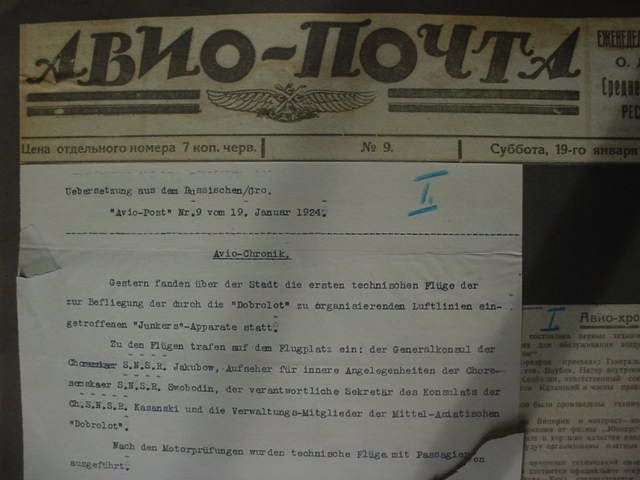
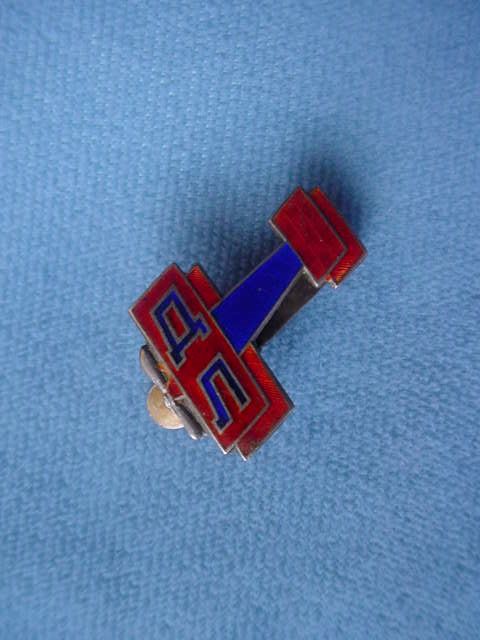
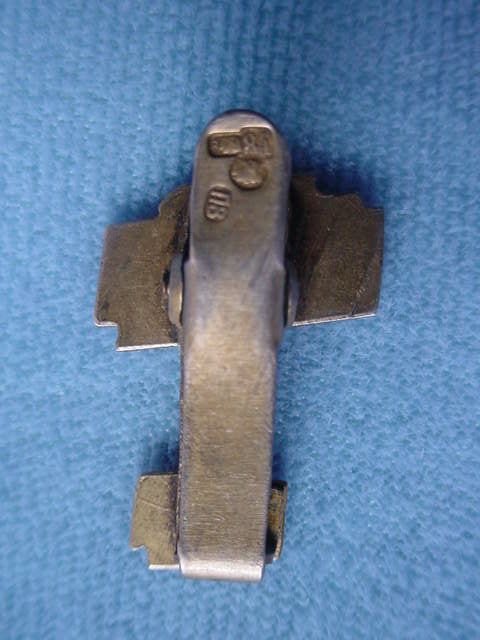 0
0 -
Can anyone check Luftwaffe rolls to see if Otto Wieprich joined as an officer around the beginning of the war? Also his son Heinz Wieprich. The whole story of the father is here:
http://gmic.co.uk/index.php?s=&showtopic=4...indpost&p=42493
but in short, he was asked by fellow WW1 pilot Goering to join, which Otto was supposed to have done, as Major, but since becoming a pacifist continued to wear his Lufthansa uniform, even after being made a Flugleiter in the Fuhrer Staffel right up to 1945. Would you mind posting any info to the original thread? Here is a Lufthansa document, one of the few to survive:

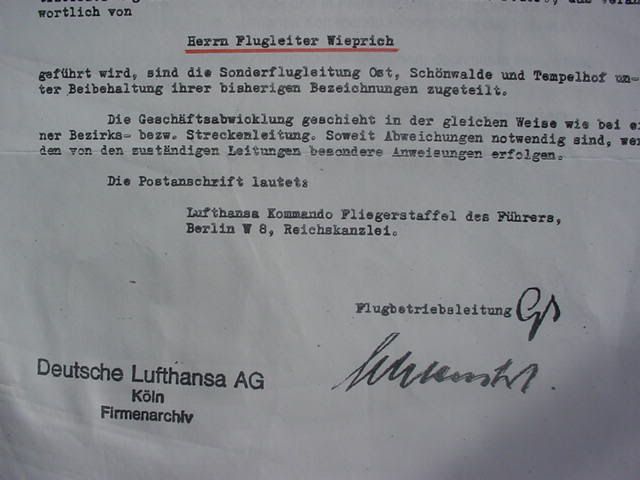
Many thanks,
John
0 -
You're welcome, David. There are a lot more cuttings in his scrapbook, but not much more to tell. The step-daughter married an American paratrooper in the late 1940s. Apparently he and Otto got on very well. The couple returned to America. Some family relative in Germany has some more photos and there's an effort to get copies, but now her husband is very sick and she's very busy nursing him. She would be happy that her step-father's story is being read with appreciation.

Rgds
John
0 -
The step-daughter says Otto had many papers with Hitlers signature and after the war destroyed documents wholesale. She thinks his Urkunden from WW1 and the 20s were destroyed at that time.
Eventually he was cleared and got a job in a US motor pool for which he was grateful.
The step-daughter recalled the tough times after the war when food was scarce. But despite this, this rewards were things he never thought of selling. I am sure he had chances to do so.
He died soon after, in 1950, of pancreatitis. He had suffered stomach ailments his whole life, even being treated during the WW2 by Hitlers physician, Dr. Morell. She remembers him in hospital, at the end, delirious from fever and crying out for forgiveness from the sweetheart of a British pilot he had shot down

As she told me before, he never talked about WW1. This was the note she discovered after his death, among his few remaining personal papers:
After the First World War, 1914/18, which I experienced not much more than a child, both as an infantryman and a pilot, I had an idea to start a group dedicated to World Peace. I?m sorry to say I did not follow up on this, while I had the energy. Even so, I told myself it would be useless to convince a war generation.
The incentive for my idea came from the following experience during the war. During an attack on Arras, I had to kill my first human being. After the attack I asked my superior if I was now a murderer. He replied, smiling, 'Boy, you are defending the Fatherland!' I replied that I did not think about that during the attack, just that I was defending my own life in that moment.
The idea came to me also during my first bombing flights, behind enemy lines, when we hit peaceful towns, as our aim could not be exact.
At Whitsuntide (Pfingsten) in 1918, I shot down my second enemy, an English plane. This young officer carried on him a letter to his bride, in which he wrote that his leave, during which they planned to marry, had been cancelled due to the heavy losses suffered by his squadron. Because of this I was the one to take his life. Again I felt like a murderer.
Those are only a few of the events which make me feel bad. During the Nuremberg process, I felt like I was guilty of war crimes. I reproach myself often because of my negligence, but I was just too young.
0 -
The step-daughter described to me the time after the war which she remembers well:
?The Germans who heretofore held together like glue?some of them now turned to the enemy and turned in anyone who they thought had any connection to the Nazi government. They were always suspicious of Otto, and several times we had US Government (uniformed and plainclothes) come and take Otto away?It disgusted me, I lost all respect for so many I thought were friends.?
He was arrested some 5 times and interrogated by the CIC and OSS. I have a copy of a letter he wrote to European edition of Stars and Stripes in 1948 dispelling a rumour that Hitler escaped in one of the Staffel aircraft at war?s end. Remember that during these chaotic last days of the war Otto is still wearing his Lufthansa, not Luftwaffe, uniform:
<<Regarding your newspaper article of the 7th of March 1948, and to end the rumours of an eventual escape of Hitler in an airplane, I want to report the following?
When the Russians came closer to the German borders the squadron was moved in January 1945 from Rastenburg in East Prussia to Pocking in Bavaria, located north of Salzburg. There a Junkers 290 was remodeled for Hitler which after completion was destroyed during the flight in March 1945 from Pocking via Munich Airport/Riem to Berlin, in a bombing attack. Since Hitler was in Berlin his old plane, the Focke Wulf 200 Condor had to be flown to Berlin by his personal pilot SS-General Baur and second pilot in command, SS-Sturmbannfuhrer Betz.
In the middle of April I received the order from General Baur to bring a part of the squadron during the night to Berlin. After landing I had a meeting with Baur in the Tiergarten, where we were told that the end of the war was not going to be at Obersalzberg, as first thoughtbut in the north of Norway. Infected by the madness of his boss, Baur declared triumphantly that even though the Americans and British had nearly reached the River Elbe, and the Russians were at the Oder, finally, with the new weapon, an atomic-like bomb, we would win the war. To my modest question how could we possibly win as we were encircled and our air force was destroyed by the enemy, he said I was a saboteur.
Baur threatened me with death if I repeated any such statements of doubt. Baur also told us that the east-west axis of the Tiergarten would be used as a runway. The trees would be cut down to make a landing possible for the Condor aircraft. Also two Fieseler Stoerche would have to be placed at constant readiness for Baur and Betz.
The squadron was stationed at the Airport Schoenwalde northwest of Berlin, with the remaining planes and personnel at Pocking under orders to transfer to Schoenwalde as soon as possible. Baur and Betz remained in the Reichs Kanzlei with Hitler. As the Russians moved closer to Schoenwalde, we moved to Berlin/Staaken. The Russians were advancing from Potsdam. After their artillery fire destroyed two Fiesler Stoerche we moved to Rechlin/Gatow. From Rechlin we informed Baur of the loss of two Stoerche, whereupon he ordered me to fly two more into Berlin that evening and land in front of the Brandenburg Tor. I contradicted his order and he threatened to have me shot. Himmler?s HQ was near Rechlin, and he was supposed to fly to Berlin, but instead his mediator Fegelein was flown to Berlin in a two-seater Me 109. By that time Hitler?s planes, Himmler?s, Doenitz?s, Speer?s and other?s were with the squadron.
Several days later the squadron had to move again to Luebeck. In Luebeck the very last plane, a Ju 52 from Berlin piloted by Hanna Reitsch, landed. On board was the wounded commander of the Luftwaffe, Feldmarshall Ritter von Greim. Hanna Reitsch told us personally that in the Reichskanzlei Hitler down to his lowliest follower were terribly nervous ?und spinnen?( ?)
From Luebeck we fled to Schleswig and finally on to Flensburg, where we saw the end of the war. The planes of the Staffel were handed over to the RAF.
Regarding the reports of Baumgarten and Mackensen made public by you, I can only say they are not the truth. If Hitler really wanted to flee by plane, he would surely have flown with General Baur who was with him in the Reichskanzlei and who was seriously wounded fleeing the Fuehrerbunker. He was supposed to be in Russian hands, suffering a leg amputation. To my knowledge Hitler only one time in his life flew with someone other than Baur.
In France during the war, I was present when Hitler had to leave and, since Baur was not available, the flight was canceled even though other good pilots were on hand. If Mackensen declares that Hitler went to Tempelhof in a tank, to be transported away in a Ju 52, it would have been impossible has the Russians had already occupied the field. Takeoff and landing in Berlin was only possible on the east-west axis. As I already said hanna RTeitsch was the last to escape from Berlin in an airplane. She is presently in the American Zone and could verify my statements. By my observations there are only three possibilities for Hitler?s end?suicide, KIA during the taking of the Reichskanzlei, or capture by the Russians. A flight by Hitler I deem impossible.
I would like to add that I was not a Party Member.
I have been interrogated several times by the Secret Service as well as by the CIC concerning my duties with the Squadron.>>
0 -
According to the step-daughter, at the outbreak of WW2 Otto?s friend Hermann Goering ?asked? him to join the Luftwaffe with the rank of Major.
Does anyone have a record of this?
Also according to his step-daughter Otto, who was somewhat of a pacifist by this time, refused to wear his Luftwaffe uniform. How he got away with this I don?t know. Maybe because Hermann Goering was his friend? At any rate, he was put in charge of ?Special Flights for the East? and, eventually, made Flugleiter on the Fuehrer Staffel,
aka Lufthansa Kommando Fliegerstaffel des Fuhrers.
She remembers he always wore his Lufthansa uniform, right until the end of the war, and had nothing nice to say about Hans Baur.
There is NOTHING of his from this time. The step-daughter contacted Lufthansa, who also said most of their records from this time had been destroyed in the bombing. But they did find this one document.


Piloting FW 200 ?Condors?, Otto was stationed at Fueher HQ at Winniza in the Ukraine, then Rastenburg in East Prussia. As a friend of Udet?s he knew the truth of his suicide, and because of Wieprich?s anti-war views he was arrested twice during the war?after the Hess flight, and in the wave of arrests following the July 20 1944 asassination attempt. Each time he was interrogated and released. Hess had spoken to Wieprich personally before the famous flight to Scotland and asked him questions about gasoline consumption. Wieprich also divorced his Russian wife in 1942 and remarried a good German girl he met in Stuttgart years earlier.
By May 1945 after much chaos he had taken the Fuehrer Staffel to its last base at Flensburg, flying for the Doenitz government, until the field was captured by Canadian troops.
0 -
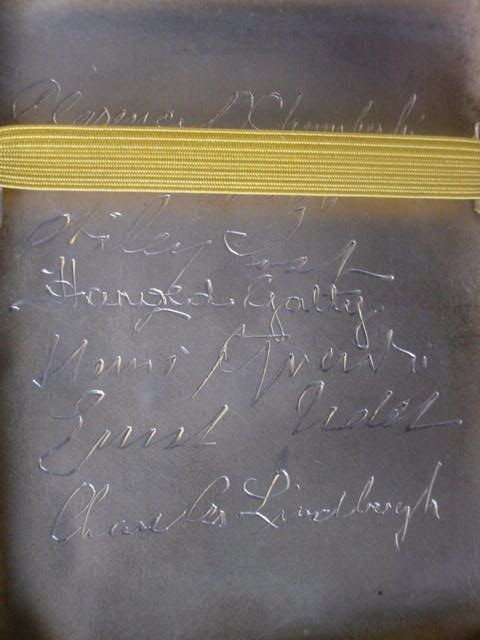
I hid these from the earlier photos of Otto's prized cigarette case.
Inside the top lid, opposite the JUNKERS inscription, some of his famous pals subsequently had their signatures engraved--I suppose during the 1930s.
Otto must have had his favourite jeweller do the work, but at whose expense? I can read 5 of 7. Can anyone decipher the other 2 ?
Clarence Chamberlin
?
Wiley Post
Harold Gatty
?
Ernst Udet
Charles Lindbergh
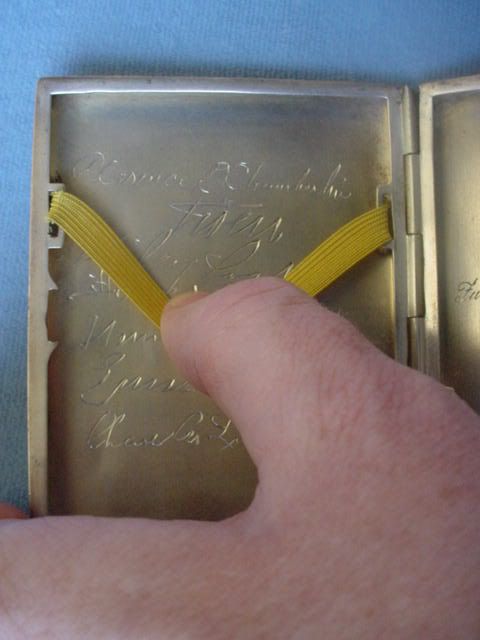
? ? ? ? ? ? ? ? ? ? ? ? ? ? ? ? ? ? ? ? ? ? ? ? ? ? ? ?
0 -
While on the job Otto got to meet all the famous aviators. Here is Chamberlin, fresh from setting a new record...
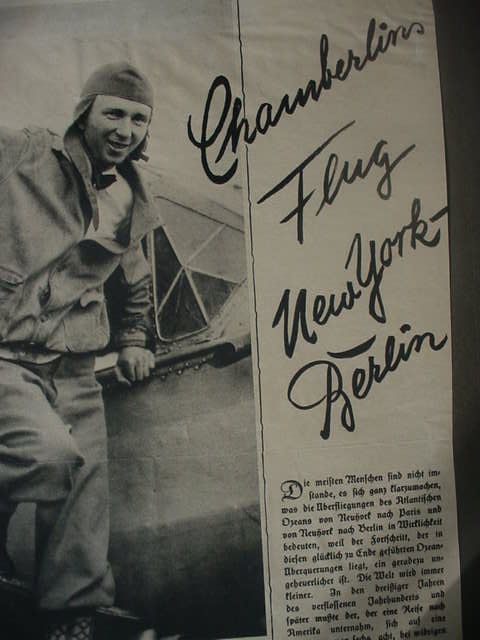
And here's a great shot of Otto greeting his friends the Lindberghs.
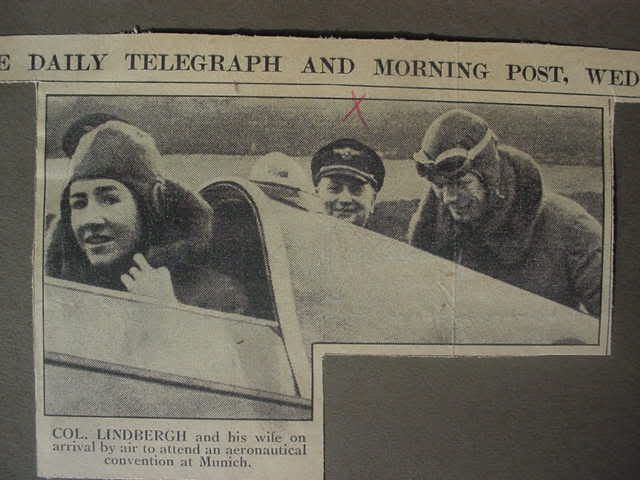 0
0 -
Thanks, Rick, I'll keep an eye out for something fitting that description and ask the family. Their original plan was to divide this group amoung FOUR ! ! ! !



 grandchildren. I'm glad reason prevailed. I've seen British gallantry groups, beautifully mounted, divided up with a pair of scissors among grandkiddies who couldn't wait to get back to their playstations. And then they find out years later that Bobbie gotta DSO and Billy gotta lousy Victory medal. I'll ask the family if there are any stray bits left behind.
grandchildren. I'm glad reason prevailed. I've seen British gallantry groups, beautifully mounted, divided up with a pair of scissors among grandkiddies who couldn't wait to get back to their playstations. And then they find out years later that Bobbie gotta DSO and Billy gotta lousy Victory medal. I'll ask the family if there are any stray bits left behind.Here is the rest of the story...
With Lufthansa, Wieprich got to manage many of the big airports in Germany including Nachtflugleiter (night-flight manager) at Berlin-Tempelhof and Chief of Lufthansa at Rhein-Main.
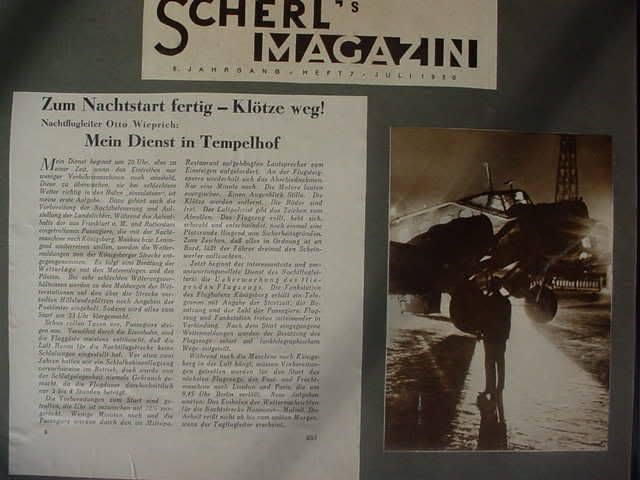 0
0 -
According to Orders of Soviet Republics by Kutsenko (p206), Wieprich received the Khorezm Red Banner on 24.04.1924. The book lists him as a Voenny letchik which translates to military pilot. Do you have the award doc among his paperwork? As for the order, it appears there were less than 100 awarded of which only a handfull are known today. Thanks for sharing such a rare item.
Doug
Thanks, Doug, for the cite. Any other details in your reference? The citation that went with the award, for example? If I had the award document I would be a very happy boy. As I'll get into in future posts, it's possible Wieprich destroyed a lot of documents after the war (1945)!
0 -
Here are a few handsome Weimar presentation pieces he picked up for his work.
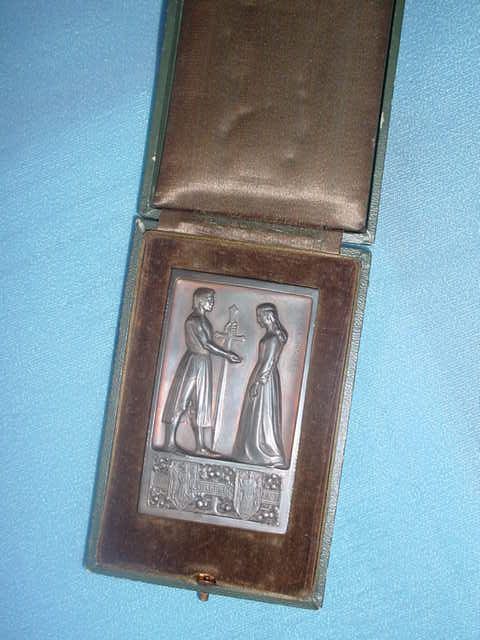
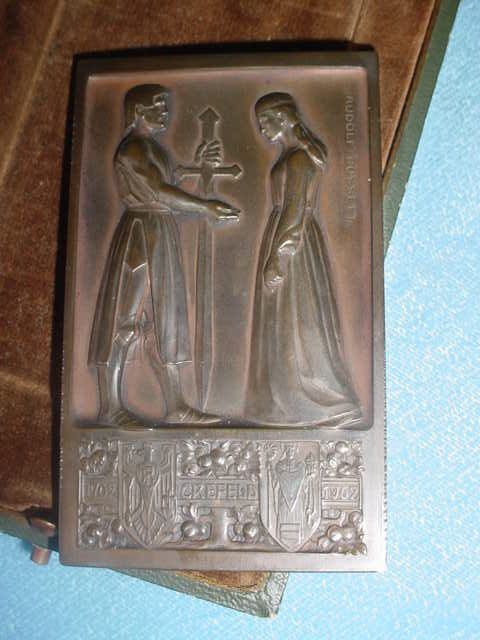
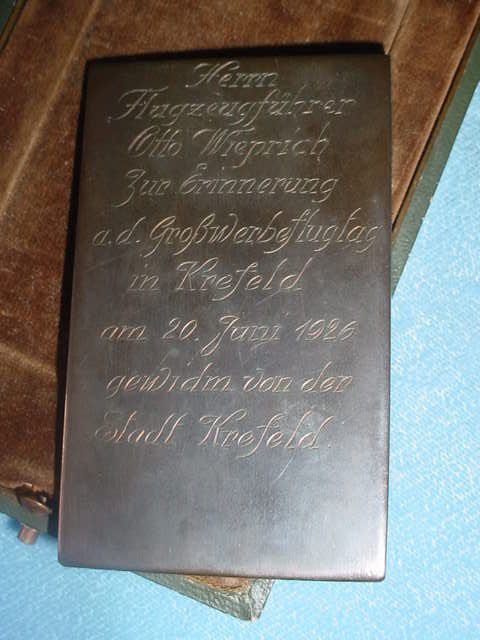 0
0 -
A most remarkable group. Thanks for posting it.
Thank you all for the kind words. Would you believe there's more? But first I have to wake up...Alas very little paperwork beyond his scrapbook. The step-daughter tried very hard to locate records without much success.
Here are a few handsome Weimar presentation pieces he picked up for his work.
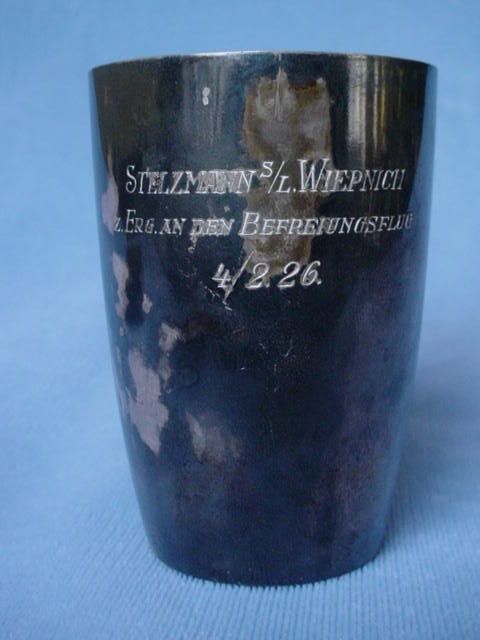
"Befreiungsflug"=release flight. Is that breaking in some new type before commercial use?
0 -
Meanwhile, the hero returns to Germany with his new Russian wife and joins Lufthansa, right at its inception, in January 1926. His title is Flugleiter i.e. ?Flight Leader,? or station manager.
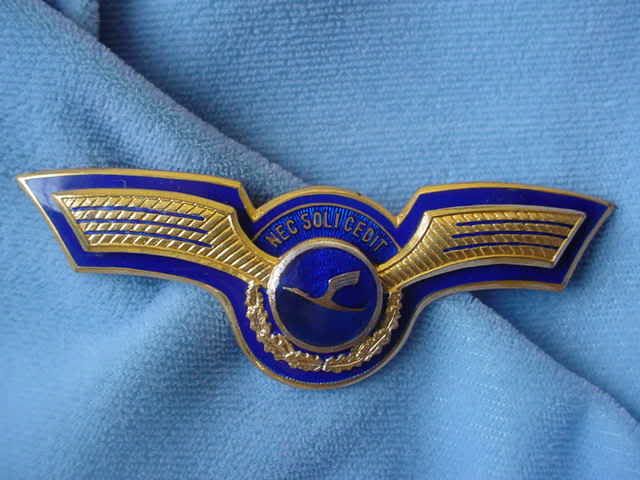
This sure looks like a new badge to me, but it was his and is numbered "11". Does anyone know what year this style dates from? He was in Lufthansa until the end of the war.
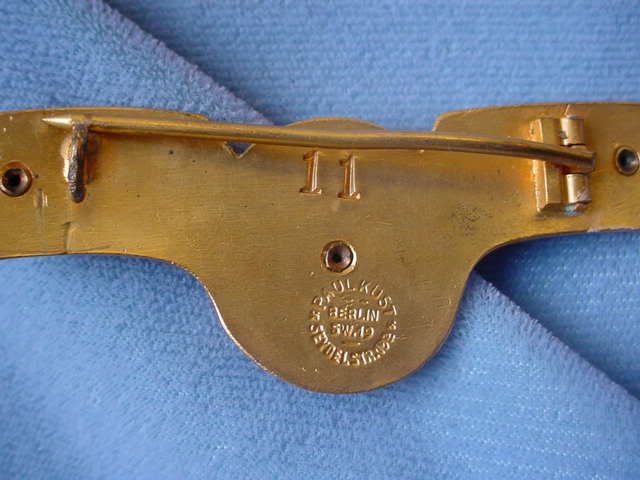 0
0 -
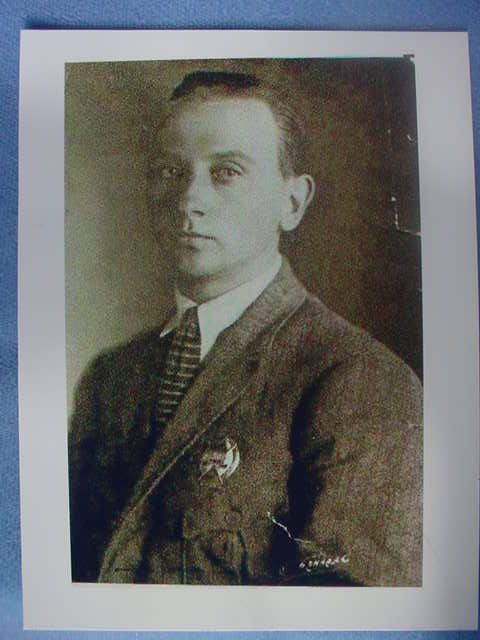
When I first saw his ?Rotbannerorden, 1924? I didn?t think too much about it, in my ignorance. Then in Thies? Auktion 27 I saw one sell for a L O T of money! I wonder how many owners of this group down the road will keep this collection together? There appears to be a little bit nicked off the bottom of the lance on this example.
Are records still extant for this award? I?ll take Rick?s advice and post a few of these foreign baubles in other categories for clues?
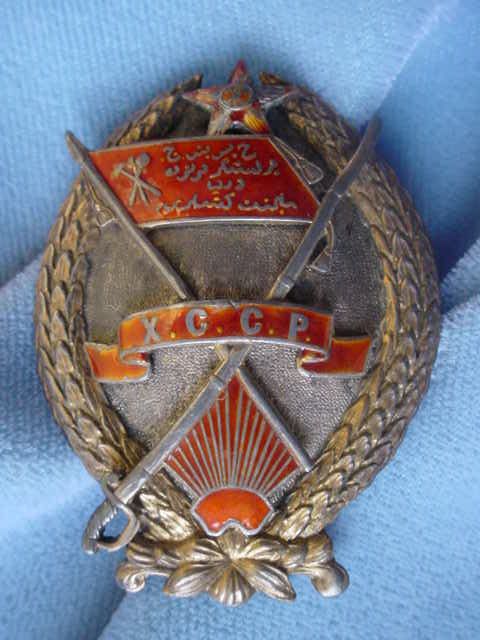
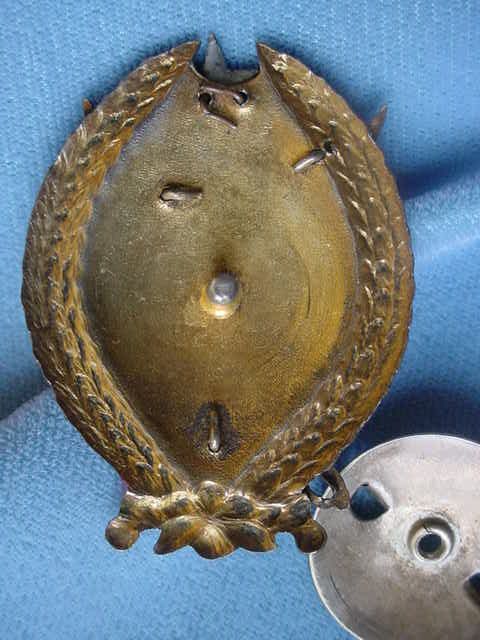 0
0 -
Did you mean stage right? I'm no expert, and I could be very wrong, but it looks to me that the man on the right is wearing officer's litzen on his collar and the fellow on the left has NCO lace around his collar, so if Otto is in this photo, I would think he'd be the fellow on the left.
Mike, there are no marks on the back of the photo, so I'm just trying to match faces from other photos! Could they have been drinking and swapped tunics? Could I need new glasses?
0 -
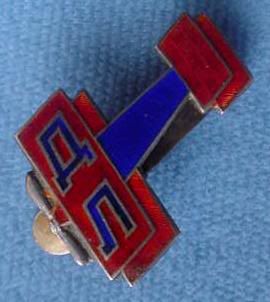
This one is a "Dobrolet" badge, of which there were innumerable versions.

In Otto's papers I just found the above translated Soviet article. It mentions "Dobrolot." Apparently the story was picked up by the Junkers newsletter several months later and in turn picked up by the national press. Something about Wieprich fighting bandits in Kiva with rubber bands, but I'm still puzzling it out!
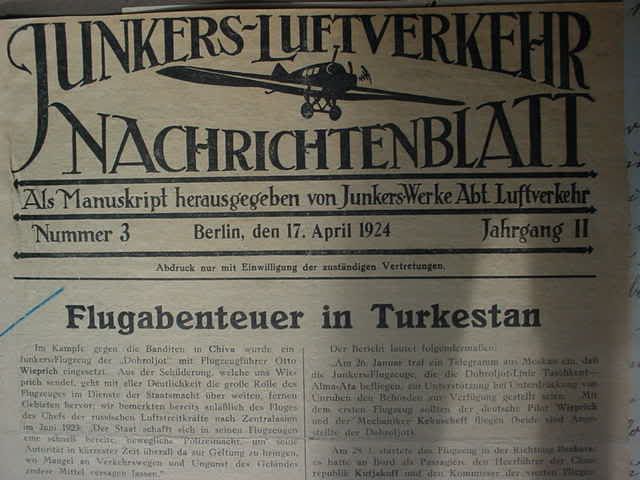
But I won't make you wait. I could type it in a few minutes or translate it in a few weeks so here you are. (Sorry about the mangled umlauts.)
Im Kampfe gegen di Banditen in Chiva wurden ein Junkers=Flugzeug der "Dobroljot" mit Flugzeugfuhrer Otto Wieprich eingesetzt. Aus der Schilderung, welche uns Wieprich sendet, geht mit aller Deutlichkeit die grosse Rolle des Flugzeuges im Dienste der Staatsmacht uber Weiten, fernen Gebieten hervor; wir bemerkten bereits anlaesslichdes Fluges des Chefs der Russichen Luftstreitkraefte nach Zentralasien im Juni 1923: "Der Staat schafft sich in seinen Flugzeugen eine Schnell bereite, bewegliche Polizeimacht, um seine autoritat in kuerzester Zeit uberall da zur Geltung zu bringen, wo Mangel an Verkehtswagen und Ungunst des Gelaendes andere Mittel versagen lassen"
Die dem Flugzeugfuhrer Wieprich zuteil gewordene Belohnung fur seine Tat geht aus folgendem Erlass des "Zentral=Komitees der H.S.S.R." hervor:
"Der Flugzeugfuhrer Wieprich hat gemaess des ihm erteilten Auftrages, das bevollmaechtigte Mitglied der R.W.S. der tuerkishen Front, Kutjakoff, im Junkers=Flugzeug von Tashkent nach der von einheimischen Rauberbanden umstellten Stadt Chiva zu bringen, den genannten Flug bei unmoeglichem Flugwetter unter Lebensgefahr ausgefuhrt. Im Sandgebiet von einem dichten Nebel ueberasscht musste Wipriech im Rayon, in dem, die Rauberbanden lagerten, landen und erfuellte nach einigen Stunden, nachdem sich der Nebel etwas zerstreut hatte, indem er noch die Besatzung das zweiten hierher geflogenen Apparates, der Bruch gemacht hatte, in sein Flugzeug aufnahm, seine Aufgabe heldenmuetig. Bei dem Flug durch das von dem Feinde besetzte Territorium wurde das Flugzeug angeschossen und erhielt einige Schussloecher. Von der Stadt Chiva aus hat Wieprich bei unmoeglichem Wetter und stroemendem Regen einen Wichtigen Flug durchgefuehrt. Wieprich hat als deutscher Staatsangehoeriger bei seiner Arbeit aufrichtig im Interesse Russlands gearbeitet und aktiv an der Befreiung der Dechane der Chorrepublik von der Gewalttaetigkeit der Basmatschen teilgenommen. Man hat beschlossen, Wieprich durch eine goldene Uhr mit der Aufschchrift ,,Dem tapferen Piloten" zu belohnen."
0 -
Fantastic, Rick, you anticipated my next post which mentions, "Dobroljot", and which I did not know was in any way connected.
You guys are the ribbon experts of the Universe--anything you can tell me about the bars would be appreciated. Would a Vizefeldwebel get a HHZ Knight's Cross? There is nothing in his scrap book about the Olympics. What did one have to do to qualify for this medal, just attend in some formal capacity, as for example with Lufthansa?
Rgds
John
0 -
-
Then the murky bit begins. If anyone knows any more about this period I would love to hear it. I guess Otto became something like a foreign contractor because in 1924 he and his Junkers airplane were requisitioned by the Red Army for combat operations in Uzbekistan, while still in the employ of Junkers, flying a German airplane with Soviet markings.
He also flew in support of the Soviets during uprisings along the Persian and Chinese borders. He was frequently shot at, and picked up a few souvenirs! His step-daughter says he got married to his first wife in Kiva, to a Russian doctor who had treated his wounds after one hot mission.
I do not the the significance of these. Can anybody help?
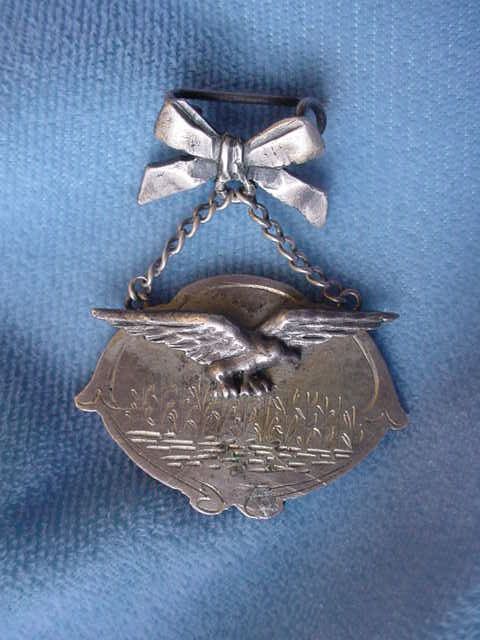
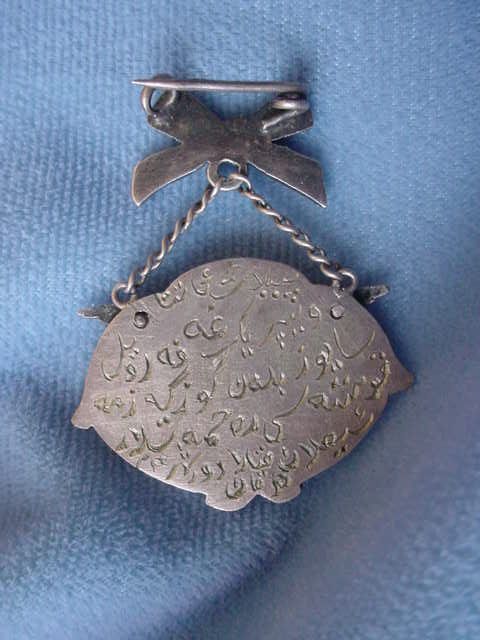
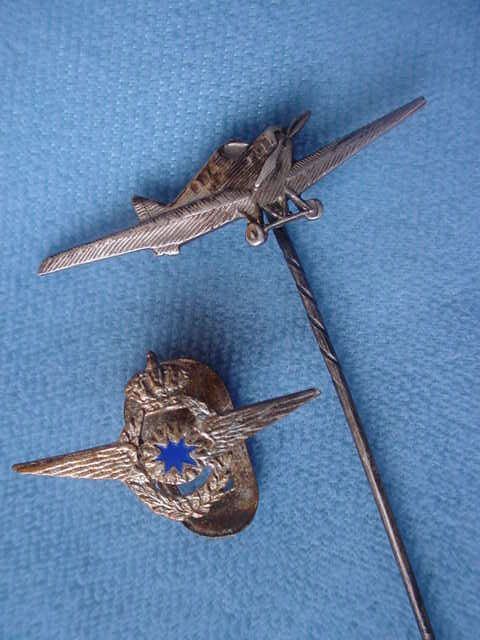 0
0 -
The step-daughter said he was "extremely proud of the case" because of the dedication below, but even more so because of engravings that were added later, which I will show in sequence.
For now, the engraving from Herr Junkers...
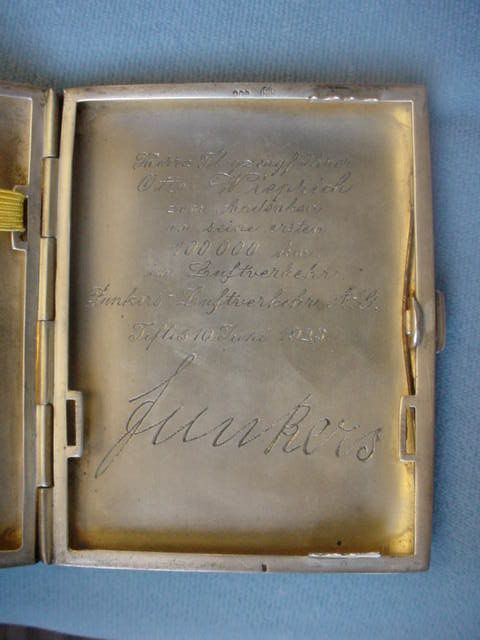
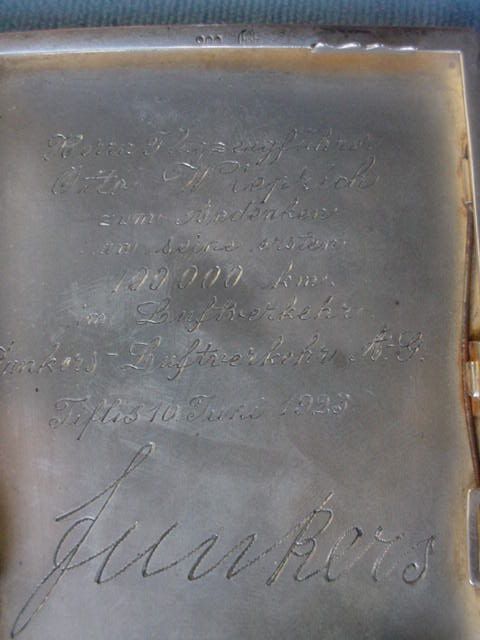 0
0 -
Next year in Tiflis, the Company presented him with his most prized possession.
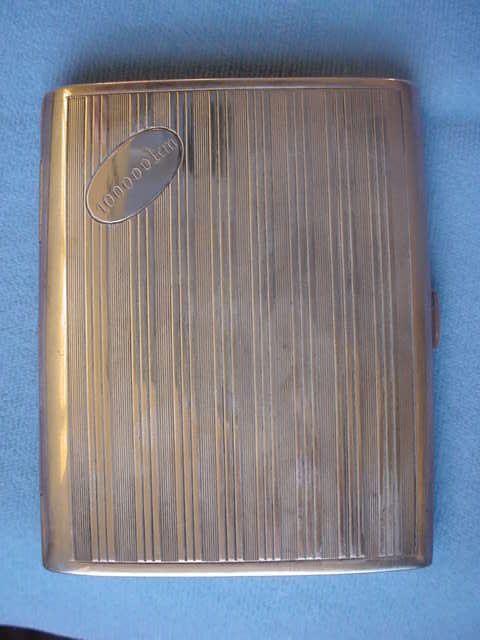
Otto Wieprich had joined the 100,000 km Klub!
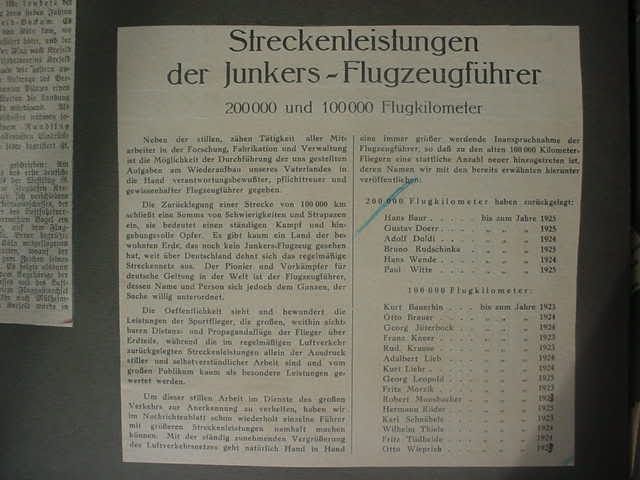
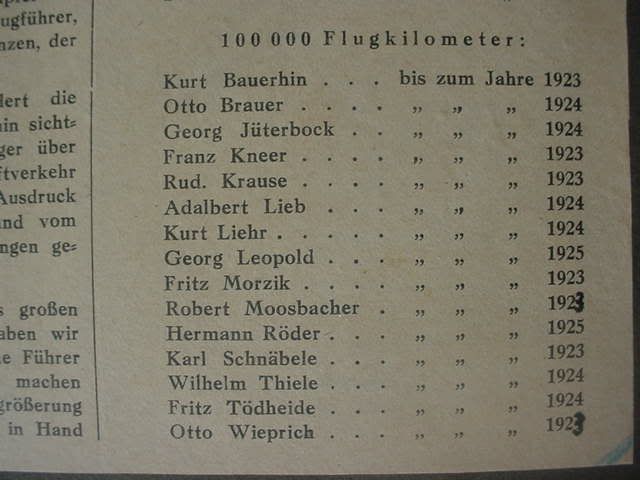
You can see Hans Baur's name, the man who would become Hitler's personal pilot, at the top of the list in the 200,000 km column.
0 -
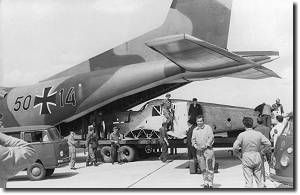
DEFINITELY check out this fascinating link on F 13s to the Deutsches Museum. Apparently the one they have on display was found in a scrap heap in Kabul in the 1960s!!!
http://www.deutsches-museum.de/ausstell/meister/e_ju.htm
But back to 1923, here is Otto in Bushir, central Persia.
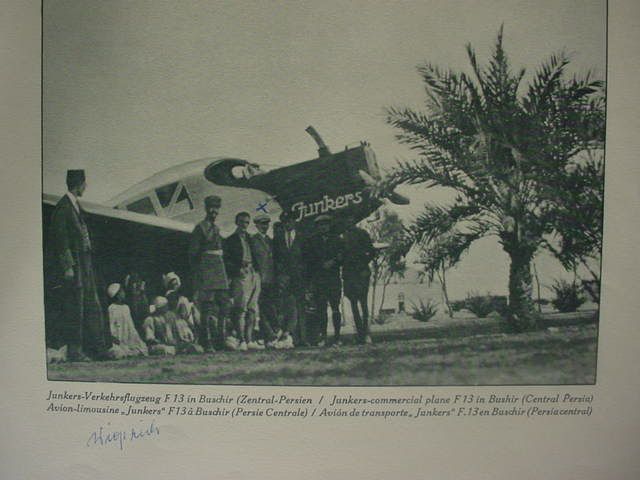
And riding a donkey for a change of pace in Isfahan.
 0
0 -
In 1923 Wieprich left Straehle to join Junkers. He flew the Junkers F-13 (the first all-metal machine) for Junkers, opening routes through the USSR.
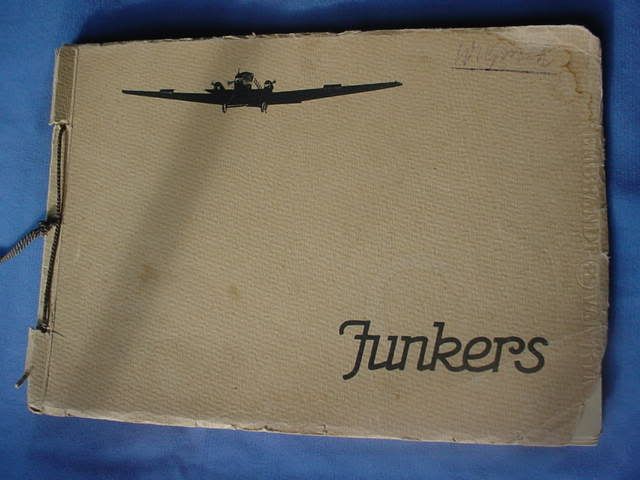
Otto made ?Xs? to mark the spot where he appears in photos from a company book illustrating some of these exotic places in the East.
Here he is in front of his F 13 in Turkestan
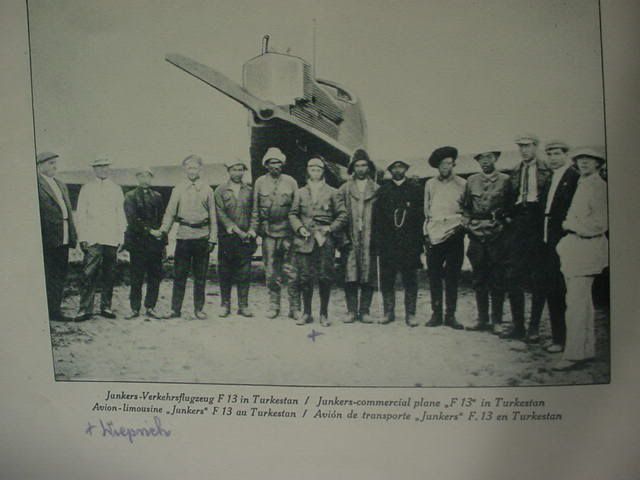
In Tehran, standing next to the wing of the second plane, identified as a Russian built Junkers.
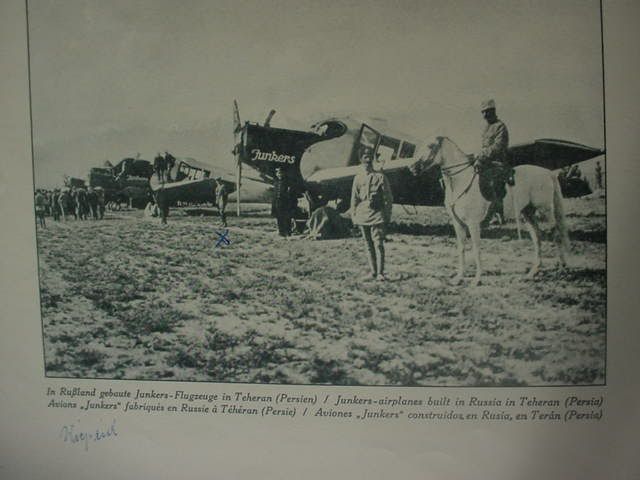 0
0




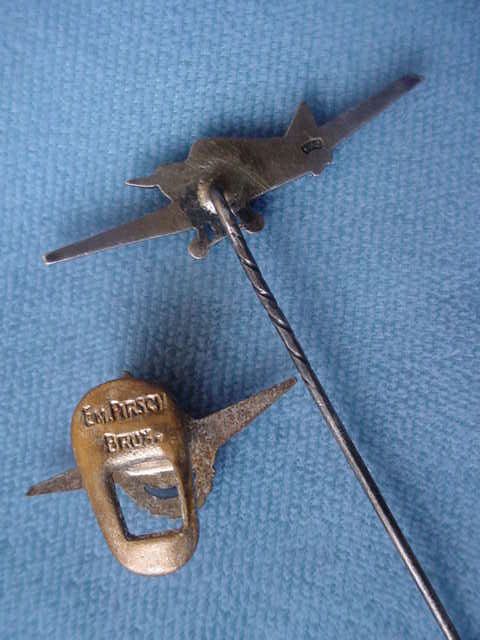
Wieprich--Red Banner, Dobrolets etc.
in Russia: Soviet Orders, Medals & Decorations
Posted